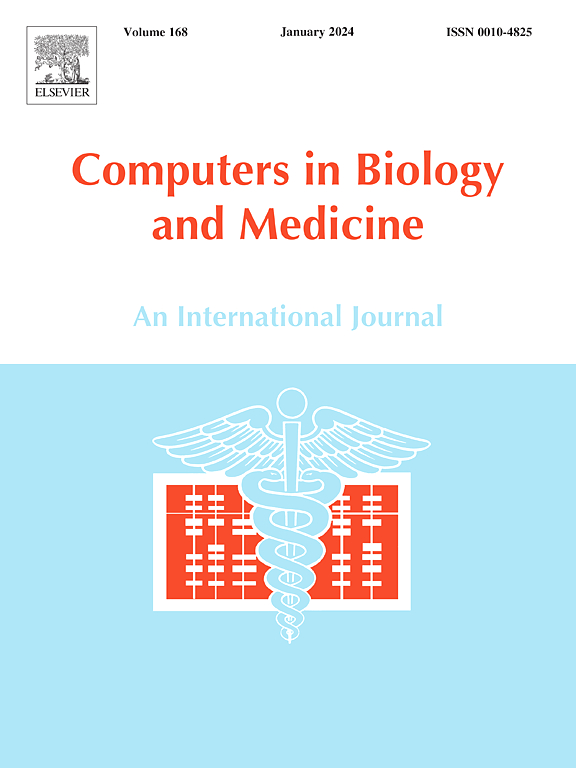DCSENets: Interpretable deep learning for patient-independent seizure classification using enhanced EEG-based spectrogram visualization
IF 6.3
2区 医学
Q1 BIOLOGY
引用次数: 0
Abstract
Neurologists often face challenges in identifying epileptic activities within multichannel EEG recordings, requiring extensive hours of analysis. Computer-aided diagnosis systems have been proposed to reduce manual inspection of EEG signals by neurologists. However, direct analysis of EEG signals is difficult due to their complex and dynamic nature, with variation across multiple patients. Therefore, researchers have proposed the short-time Fourier transform (STFT) to capture dynamic events indicative of seizures through time-varying frequency representation of EEG signals. However, tradeoffs between time and frequency resolution limited the spectrogram’s interpretability and affected clinical deployment. Hence, this study proposes extracting high-resolution channels via a novel STFT spectrogram construction algorithm encompassing taper functions for seizure diagnosis. Initially, we extracted seizure and non-seizure segments from each channel of selected patients in the CHB-MIT dataset. Next, we systematically apply taper functions like Hann and Gaussian windows to minimize the edge effect during the construction of spectrogram images. Finally, we employ Dilated Convolutional Squeeze and Excitation Networks (DCSENets) through leave-one-patient-out cross-validation (LOPOCV) to perform patient-independent seizure classification. The proposed DCSENets achieve an average accuracy of 87.20±11.48% and 87.29±10.48% with Hann and Gaussian taper functions, respectively, and 86.85±11.56% without the taper function. Most patients with high performances indicate similarity in train-test sample distribution using the Kolmogorov–Smirnov test at or . Furthermore, the Grad CAM deep visual explainer integration enhances the interpretability of the deep learning model’s decision-making process. Consequently, neurologists are provided not only with enhanced visualized spectrograms but also a transparent model for improved seizure diagnosis.
DCSENets:可解释的深度学习,用于患者独立的癫痫分类,使用增强的基于脑电图的频谱可视化。
神经科医生在多通道脑电图记录中识别癫痫活动时经常面临挑战,需要大量的分析时间。计算机辅助诊断系统已被提出,以减少神经学家对脑电图信号的人工检查。然而,由于脑电图信号的复杂性和动态性,以及不同患者之间的差异,直接分析脑电图信号是困难的。因此,研究人员提出了短时傅立叶变换(STFT),通过脑电图信号的时变频率表示来捕捉指示癫痫发作的动态事件。然而,时间和频率分辨率之间的权衡限制了频谱图的可解释性,并影响了临床部署。因此,本研究提出通过包含锥函数的新颖STFT谱图构建算法提取高分辨率通道,用于癫痫诊断。最初,我们从CHB-MIT数据集中选定的患者的每个通道中提取癫痫和非癫痫片段。接下来,我们系统地应用像Hann窗和高斯窗这样的锥度函数来最小化谱图图像构建过程中的边缘效应。最后,我们采用扩张型卷积压缩和激励网络(DCSENets),通过留一个患者的交叉验证(LOPOCV)来执行独立于患者的癫痫发作分类。采用Hann锥度函数和高斯锥度函数时,DCSENets的平均准确率分别为87.20±11.48%和87.29±10.48%,不采用锥度函数时,DCSENets的平均准确率为86.85±11.56%。大多数表现优异的患者在训练样本分布上具有相似性,使用Kolmogorov-Smirnov检验在0.010.05。此外,Grad CAM深度视觉解释器集成增强了深度学习模型决策过程的可解释性。因此,神经科医生不仅提供了增强的可视化频谱图,而且还提供了一个透明的模型,以改善癫痫的诊断。
本文章由计算机程序翻译,如有差异,请以英文原文为准。
求助全文
约1分钟内获得全文
求助全文
来源期刊

Computers in biology and medicine
工程技术-工程:生物医学
CiteScore
11.70
自引率
10.40%
发文量
1086
审稿时长
74 days
期刊介绍:
Computers in Biology and Medicine is an international forum for sharing groundbreaking advancements in the use of computers in bioscience and medicine. This journal serves as a medium for communicating essential research, instruction, ideas, and information regarding the rapidly evolving field of computer applications in these domains. By encouraging the exchange of knowledge, we aim to facilitate progress and innovation in the utilization of computers in biology and medicine.
 求助内容:
求助内容: 应助结果提醒方式:
应助结果提醒方式:


